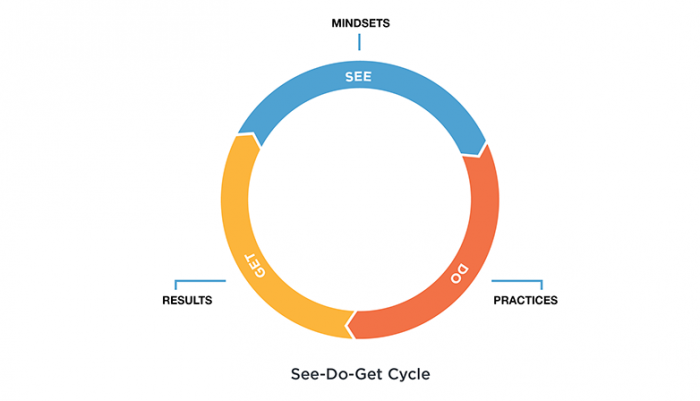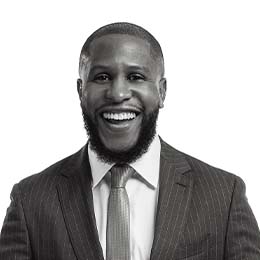Practice 1: Develop a Leader’s Mindset™

From individual contributor to leader
When someone transitions from an individual contributor to a leader, their definition of results needs to change. They need to see results differently. When they were an individual contributor, their results were the work they did. But now they’re a leader, so they own the results of everybody their team.
The first job of the leader is not to get results alone, but with and through others. Leaders are still responsible for personal deliverables, but they take a back seat to ensuring that their direct reports hit theirs, while the people on their team grow, learn, and even become leaders themselves. In other words, your people are your results.
To be an effective leader, individuals must shift from thinking I am responsible for my results to I am responsible for delivering results through other people.
Free Guide
Leading a team requires a different skillset than working as an individual contributor.
Register for an Event
Discover the proven best practices to develop your people into a high-performing team.
The Power of Mindsets
The results we GET in our lives depend on what we DO. What we DO depends on how we SEE the world around us. If you want to change your results, begin by changing your mindsets.
For leaders that have the common mindset of achieving results on their own, it’s critical for them to accept once and for all that their work isn’t just about them anymore; it’s about their team. It’s time to let go of their past successes. They earned the leadership position because they performed at a superior level. It’s time to let it all that go and focus on the job ahead.


If you want to make minor changes in your life, work on your behaviour. But if you want to make significant, quantum breakthroughs, work on your paradigms.
Leading a team requires a different mindset than working as an individual contributor. Explore the critical mindset shifts that will maximize success as a leader of others.
Increase engagement of team members by conducting regular 1-on-1s, deepen your understanding of team-member issues, and help them solve problems for themselves.
Create clarity about team goals and results; delegate responsibility to team members while providing the right level of support.
Give feedback to develop team-member confidence and competence; improve your own performance by seeking feedback from others.
Identify specific actions to help team members navigate and accelerate through change and achieve better performance.
Use weekly planning to focus on the most important priorities, and strengthen your ability to be an effective leader by applying the 5 Energy Drivers™.










